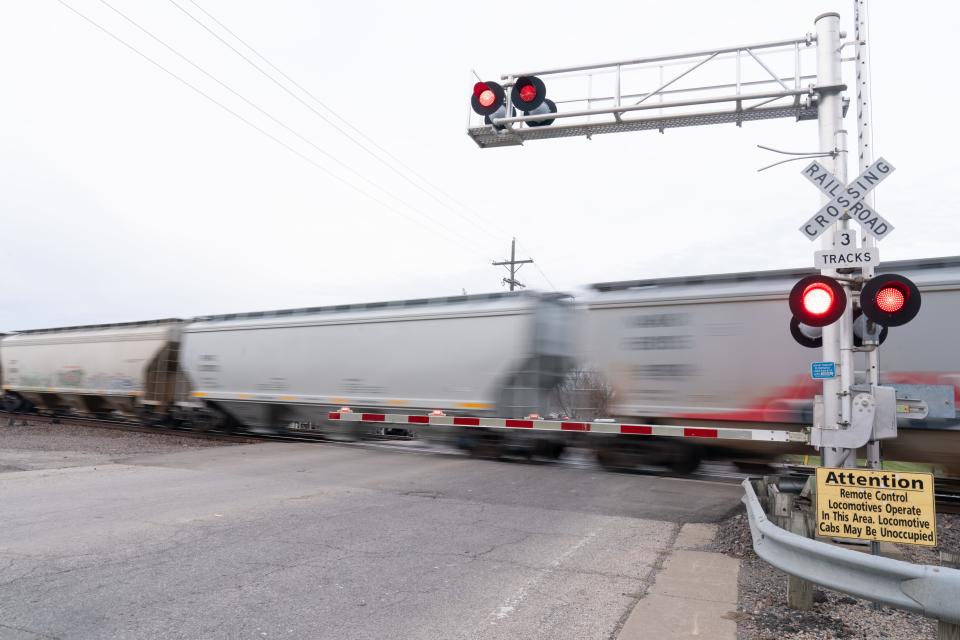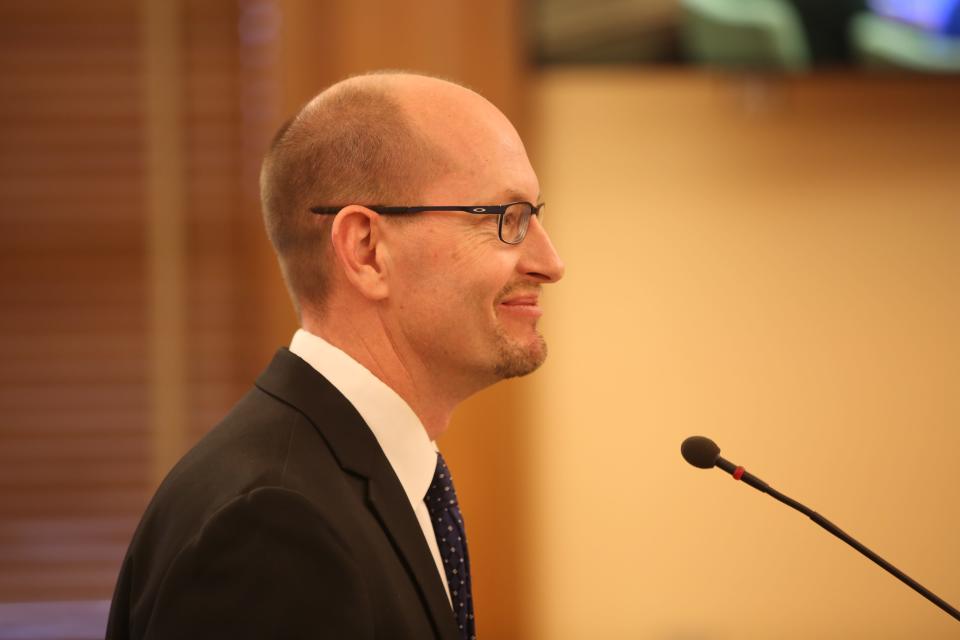Here's why Kansas has a train crew rule even though KDOT admits it won't prevent accidents
While a new Kansas regulation requiring railroad companies operate trains with at least two human crew members is intended to benefit public safety, the state's top transportation official admits the rule won't reduce the number of accidents.
"In fact, KDOT's assumption is that these derailments and incidents will continue to happen regardless of the crew size, whether that be a two-person, one-person or zero-person crew," said Kansas Department of Transportation secretary Calvin Reed.
Reed told the Legislative Budget Committee on Thursday that the new two-person train crew regulation went into effect on Nov. 3. However, KDOT is allowing a grace period until April before railroads will have to comply.

Rep. Troy Waymaster, R-Bunker Hill, said he had hoped there would be additional speakers on the topic at Thursday's meeting.
"But due to some legal entanglements they are not allowed to testify in regards to this particular issue," he said.
The new regulation generally requiring trains operating in Kansas have a minimum of two crew members in the control compartment of the lead locomotive unit. It was proposed in May, had a public hearing in July and the agency accepted public comment into August.
The move by Gov. Laura Kelly's administration came as railroad safety gained greater attention following the derailment of a train carrying hazardous chemicals in East Palestine, Ohio.
Reed said KDOT received 314 public comments, with about 95% in support of the regulation. The proponents cited crew health benefits and quicker reaction during an incident.

"The 16 opponent comments generally claimed the regulation lacks safety justification, that it would be preempted by federal law and that it deters innovation," Reed said. "There were also concerns about the implementation costs. The cost concerns were not substantiated when KDOT requested more information during the public comment period."
All of the opponents were industry stakeholders, he said. They were opposed, even though only about 6% of train movements in Kansas currently have less than a two-person crew.
More: Higher cost or higher safety? Legislators, railroads and KDOT face off on rail safety
Reed said the purpose of the regulation is public safety.
Kansas had 75 train incidents totaling $10.6 million in damage in 2022, according to the Federal Railroad Administration, Reed said. Meanwhile, Operation Lifesaver reported 39 train collisions in Kansas in 2022, resulting in 14 injuries and five deaths.
"To be clear, the purpose of this regulation is not to decrease the number of derailments or incidents," Reed said. "Because the current industry standard is a two person crew for class one railroads and for many short line railroads, there's very little data to validate an increase of risk of derailments or incidents when a locomotive is using less than a two person crew."
More: In the wake of Ohio train derailment, will rail safety be a priority in Kansas?
Instead of reducing the number of train wrecks, the regulation is intended to improve the emergency response when incidents happen.
"The purpose of this regulation is to mitigate the negative consequences when trains derail and crashes occur," Reed said. "A second crew member provides a redundant and immediate source of information for first responders about train contents and other pertinent information. It also gives the ability to more quickly separate a train to reduce further damage to persons and property."
Getting information to first responders could facilitate evacuations, help determine resources needed and otherwise inform the emergency response, Reed said.
Jason Alatidd is a statehouse reporter for the Topeka Capital-Journal. He can be reached by email at jalatidd@gannett.com. Follow him on X @Jason_Alatidd.
This article originally appeared on Topeka Capital-Journal: KDOT says Kansas railroad crew regulation won't prevent train wrecks

